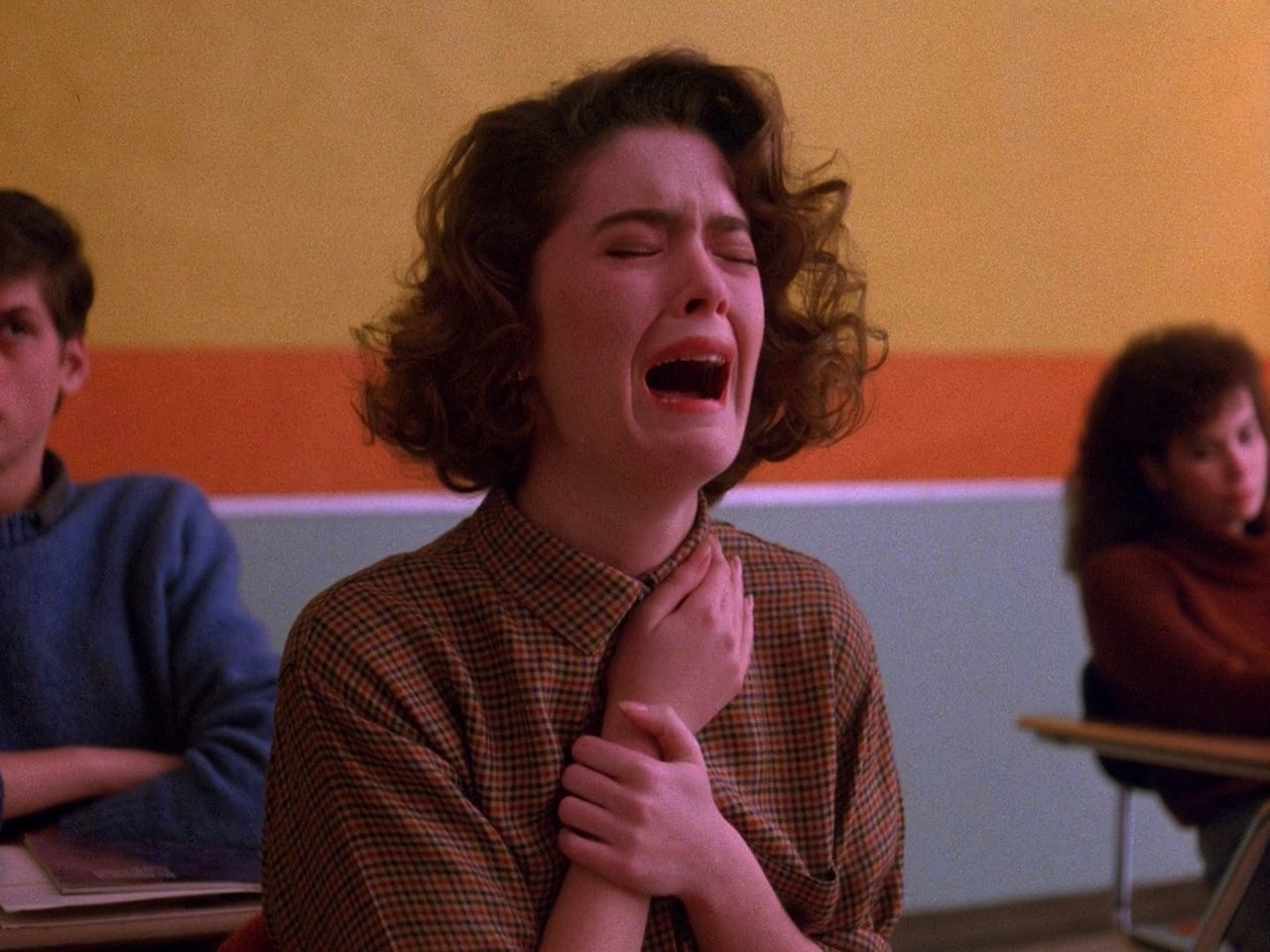Why so sad?
Barely an episode of Twin Peaks goes by without at least one character breaking down into ugly, heaving sobs. The first joke in David Lynch’s cult-favorite ’90s series features a man crying over the death of a young woman, Laura Palmer. One character, Deputy Andy Brennan, breaks down while taking photographs of the plastic-wrapped corpse. His boss, Sheriff Harry Truman, sighs, “My God, Andy, it’s the same thing as last year in Mr. Blodgett’s barn. Is this going to happen every time?” Brennan stammers apologies through ridiculous sobs in response.
You only really need to have watched one episode of Twin Peaks to realize that, yes, this is going to happen every time. Less than ten minutes later, there is more crying: when Laura’s parents are informed of her death, the camera lingers on her grieving mother’s desperate howling for far longer than feels comfortable. And as more of her friends and family hear of her murder, at least eight crying scenes follow, including more from Deputy Andy, who struggles, mid-bawl, to say, “Tell Harry… I didn’t cry!” It’s a farcical amount of tears.
Lynchian Tears
“I’m big on people crying. Girls crying, men crying, women crying: crying in general.” — David Lynch, Lynch on Lynch
“There is crying in every Lynch movie [...] But never do the tears flow as profusely as in Twin Peaks.” — Dennis Lim, David Lynch: The Man from Another Place
“Nor do they simply cry or grieve: characters weep and wail as sorrow tears at their souls.” — Andy Burns, Wrapped in Plastic: Twin Peaks
“If Lynch is an aesthetician of sadness, he is also one who does not shy from the ugly cry.” — Dennis Lim, David Lynch: The Man from Another Place
“The day when the sadness comes, then we ask: ‘Will this sadness which makes me cry... will this sadness that makes me cry my heart out... will it ever end?’ The answer, of course, is yes. One day the sadness will end.” — Twin Peaks Season 1, Episode 3
The crying is real
The tears on Twin Peaks often hover between extremes: the harrowing wails of a bereaved mother, and the comic, overblown snivels of an oversensitive police officer. When Laura’s father flings himself dramatically into her grave, his tears streaming over her coffin as it rises and falls in and out of the ground, should we laugh or cry? What about when he dances through his tears, clasping his head in his hands, while onlookers on the dancefloor laugh and mimic him? When Laura’s best friend moans open-mouthed in the middle of class, or when Laura’s angry boyfriend collapses into pathetic sobs? When crying is so melodramatic and so frequent it feels almost obscene, is it funny, or a little disturbing, or both?
Twin Peaks delighted in unsettling and baffling its audience, and as the series became progressively stranger and more supernatural, its rivers of tears felt more significant. In one of her introductions to the episodes, the Log Lady explains that the tears fall steadily in the town of Twin Peaks because of a collective ignorance. “What is this thing called a tear?” she asks, marveling at the existence of “tiny ducts, tear ducts” to produce these inscrutable excretions. “There is a sadness in this world,” she explains, “for we are ignorant of many things.. things like the truth. So sadness, in our ignorance, is very real. The tears are real.” The show’s melodrama may make you laugh more often than it makes you well up, but it also serves as a menacing reminder that the things that drove its characters to tears could exist in your town, in your house, or even in your mind.











